“5 Tips From a Bestselling Author (and Former Luddite) on Overcoming Blog Phobia” plus 1 more |  |
| 5 Tips From a Bestselling Author (and Former Luddite) on Overcoming Blog Phobia Posted: 14 Aug 2014 09:29 AM PDT This is a guest contribution from author Eileen Goudge. There's no such term as "blog phobia" as far as I know, but the condition is very real, I assure you. I know authors who quake at the mention of blogging, as I once did before I got a handle on it. My professional writing career began in an era when authors were expected to do only one thing: write a kickass book. And maybe go on tour if there was a marketing budget for said book. My first novel, Garden of Lies, was a New York Times bestseller and my publisher sent me on a cross-country tour that was a blur of TV appearances, print and radio interviews, and book signings. All of which seems like a dream, looking back. Flash forward to present day. In traditional publishing, marketing and publicity budgets for all but a handful of top tier authors are practically nonexistent. For indie authors it's DIY all the way. This puts enormous pressure on the author to produce more than just the requisite book a year. We not only have to write the books, we have to spread the word in a crowded market when we have something to offer. Mainly this is done through blogging and social media, which go hand in hand. Back when I was a Luddite and proud of it, I would reason that I didn't have time for all that nonsense. Also, it goes against our nature. We writers tend to be loners. Who else would spend most of his or her waking hours holed up alone, toiling away? Finally I wised up and got with the program. I realized if you don't make the time, you might as well not bother writing the book in the first place. Few people will read it because they won't know it's there. "To blog or not to blog," is no longer the question. It's a matter of how often and how best to target your audience. A blog is an essential tool in every author's tool kit. It's the best way I know to introduce new readers to your unique voice and engage with existing fans so they don't forget about you or think you died. So you find the time, even if you have to pull it out of thin air. The challenge then becomes getting those all-important views and click-throughs. Not long ago, I read a blog post by an author who compared her site when she first started out to a "dusty billboard on a back-roads highway." Traffic was so thin, why bother? she bemoaned. Her posts became more and more infrequent and traffic to her site dwindled further, a vicious cycle that had her feeling utterly defeated. I know the feeling! I used to think it was enough just to throw a blog post into the Vast Unknown and simply hope for the best. Search Engine Optimization? I didn't know what it meant much less what it could do for me. I still wonder sometimes if the time and effort I put into blogging is worth it, given that I don't have millions of subscribers and I'm competing with a gazillion other author-bloggers. Then I tell myself, "One step at a time. Rome wasn't built in a day." My own page stats were downright embarrassing when I first started blogging. So I read up on what other, more successful bloggers had to say on the subject. I consulted with marketing experts. I learned some tricks that helped increase traffic to my site and learned a little about creating keyword-rich content, inbound and outbound links and search engines. My blog still isn't where I'd like it to be, but at least it's no longer a "dusty billboard on a back-roads highway." Here are my top 5 tips to developing a successful author blog:Direct traffic to your site by making it a fun destinationAs the author with the "dusty billboard on a back-roads highway" learned, you can't expect to see much traffic to your site if a) people don't know it's there or b) it's a snooze-fest. She solved her dilemma on both counts by making it fun for herself. She's a history buff and she wrote historical novels, so she started doing blog posts about cool historical stuff along the lines of "Did you know…?" She built a following by reaching out to other history geeks and playing to her audience. And her specialized or themed posts also helped people more easily discover her site when searching for related keywords in Google. For me the ticket was to write about my life experiences, which are the stuff of my novels. I come from a big, contentious Irish Catholic family in which addiction runs rampant. I was a single mom, on welfare at one point. I've been divorced a few times. I found my "Prince Charming," and present husband, Sandy Kenyon, while on book tour, fittingly enough, when he interviewed me on the radio talk show he hosted at the time. My son, Michael, is schizoaffective. The list goes on and on. If I had to sum up my life in a sentence it would be, "Never a dull moment." From the comments I've gotten on my blog confidentials, it would seem viewers respond to candor, even when it portrays you in a less than flattering light or reveals a skeleton in the closet. The more approachable you seem, the more followers you'll attract, which leads to more clicks of those all-important "buy" buttons.
Come up with provocative blog headingsYou have all of a nanosecond to grab someone's interest. Use it wisely. Ann R. Allen, in her successful blog, named by Writer's Digest as one of the top 101 most influential blogs, uses "Is Your Office Cubicle Haunted?" as one example of a provocative blog heading that poses a question. Providing answers is another way to go. "Spend Ten Minutes Doing This Every Day And You Could Transform Your Blogging" is the title of a recent post on this site. That is definitely one I want to read! The heading of my most recent blog post is "The Nitty Gritty on Beach Reads, in which I tell of the life-altering, real-life stories behind my women's fiction novels that are often billed as "beach reads." I got close to a thousand Facebook views and a flurry of retweets on that one. I think the title had something to do with it. Choose headings with social media in mind. I was recently hooked by the heading of a post written by bestselling author Claire Cook for the popular Jane Friedman site. "Why I Left My Mighty Agency and New York Publishers (for now)," not only sparked my interest, it generated over a hundred comments and a gazillion retweets as well as posts on Google Plus and Facebook.
Don't neglect to add linksI used to think—naively—that since any information relevant to my books was easily obtainable on my website, two or three clicks away, why bother adding links to my blog posts? Well, guess what? Two clicks is one too many for the majority of people reading your blog. In today's digital-driven world I'm amazed by the number of authors whose blog posts contain not one single link, much less a buy button or clickable book cover image! Why bother if you don't make it easy—as in a single mouse click—for a potential customer to sample your wares? Be sure to include the link to your website, and whenever you mention a particular title, link to that title's book page on your site or, better yet, directly to a retailer page. I also recommend incorporating outbound links and linking to the sites of other authors mentioned in your blog post. The same goes for major products, places, or attractions related to your subject matter. I find that this is helpful for my readers and easily provides them with a richer experience when reading my story.
Keep it fast-pacedStudies show the average blog viewer tends to skim rather than read every word. A snappy hook, short sentences, short paragraphs, bullets, and images are your best defense against short attention spans. Luckily I learned this early on in my career when I wrote for tabloids (anything for a buck!). If I didn't keep it short and punchy, I didn't make the sale. This doesn't mean you can't write a lengthy post. As long as it's engaging and easy to understand (as in not wordy or too many big words) it will hold the reader's interest.
Comment on other blogs and offer to do guest blog postsI'm not ashamed to admit it: I'm a mere piker compared to veteran bloggers like Anne R. Allen, Jane Friedman, and my friend and fellow author, Julie Valerie. They have huge subscriber lists that dwarf my own. And rightfully so—they offer good content, and I always learn something from reading their posts. I make a habit of always commenting on the blogs I follow. Oftentimes this sparks a dialogue. The blogger remembers and appreciates your participation, and some of his or her fans may trickle over to your site. Once I get to know a blogger, I offer to do a guest blog post. Usually they take me up on it. Content is king, and when the burden is on the blogger to keep up a steady supply, it's nice to take a break once in a while. These are just a few basic guidelines. If you're smart you won't make the same mistake I did, which was to blunder through initially without doing my homework. Better to learn from other people's mistakes. (Lucky for you there's a ton of information on the Internet on how to do it right.) Pay attention. Revisit the resources here on Problogger, such as this useful round-up of tips and tutorials for beginners 7 Strategies for Growing Community on Your Blog. Bone up on the use of SEO keywords and the like. Be smart. Don't be a dusty billboard on a back-roads highway. Be the neon sign that beckons from the four-lane freeway. New York Times bestselling novelist Eileen Goudge wrote her first mystery, Secret of the Mossy Cave, at he age of eleven, and went on to pen the perennially popular Garden of Lies, which was published in 22 languages around the world, and numerous other women's fiction tiles. Bones and Roses is the first book in her Cypress Bay Mysteries series. She lives in New York City with her husband, television film critic and entertainment reporter Sandy Kenyon. Keep connected with Eileen at her website, www.eileengoudge.com. Originally at: Blog Tips at ProBlogger |
| How to Use Your Blog to Leverage Social Proof and Increase Your Authority Posted: 13 Aug 2014 09:59 AM PDT This is a guest contribution from Adam Connell. Have you ever wanted your readers to take more notice of what you have to say? You're not alone. And have you ever wanted other bloggers, journalists and writers to reference you as an expert in top publications on the web? Countless others have done this and you can too. But HOW? The answer is social proof. With social proof comes authority, and all the benefits that it has to offer. And authority is an awesome thing to have because most of us are inclined to trust authority figures implicitly. In this post you will learn exactly what this social proof thing is, how to avoid negative social proof, and the specific steps you can take to leverage positive social proof – starting today. What is this social proof thing all about?Social proof is a psychological concept which highlights how people look to those around them in order to make decisions and decide on a course of action. This is based on the assumption that those actions are indicative of the correct course of action. A popular example of social proof is how nightclubs limit the number of people that can come in at a time. When others walk past, it appears that the night club is more popular than it actually is. You can use this concept on your blog and it's easier to do than most people realise. And there are different types of social proof that you can leverage, including a large number of email subscribers or even testimonials from industry influencers. But, you have to be careful to avoid any negative social proof because there is the potential for social proof to hurt you, when you do it wrong (more on that in a moment). The key to successfully leveraging social proofSocial proof can be positive or negative. Negative social proof can have very damaging effects. A good example would be going into a restaurant at peak time only to find that you and a few other people are the only ones there – this sends the message that nobody else enjoys going to the restaurant and usually prompts the thought of "is there something wrong with the food?" The same can happen with your blog. Telling people about your 165 email subscribers or drawing attention to a post of yours which has only had 15 tweets will send the wrong message to your readers. So, if you don't have the numbers – leave them out. On the other hand, if you do have something to really shout about then it's worth letting your readers know. We'll talk about exactly how you can do this in a moment. 6 ways you can leverage social proof right nowIt only takes around 1/10th of a second to form a first impression. So, first impressions are a big deal and you need to take every step you can to ensure that the first impressions your blogs visitors get is a great one. Social proof will make a difference (when it's done right). #1 – Your home page is an opportunity that shouldn't be wastedIf you check your blogs analytics, chances are that your homepage will be one of the most visited pages. Instead of a standard blog page, you could try something different, something that would place higher focus on social proof elements. Try creating a landing page with key social proof elements. The added benefit of this is that you can use this to funnel more subscribers into your email list. It's a win win. A great example of this in action is the home page of Noah Kagan's blog; OKDork.com: This page screams "I know what I'm doing and you should listen to what I have to say". Here's why: Noah highlights exactly how successful he has been (2 multi-million dollar businesses and growing a 700,000+ email list). Noah has two fantastic testimonials from big names and these names are 100% relevant too. Studies have shown that pictures increase trust, Noah includes a smart picture of himself so you can put a face to the text. Another good example is Ian Brodie's homepage. Here's why this works: Ian includes logos of publications where he has been featured, they hyper relevant to his audience and big names in general. Ian has incorporated two testimonials, these speak volumes about what Ian can do for his readers. There is also a picture of Ian for added which increases trust. How to implement this yourself: You need to decide on how you want the page to look; the best thing to do here is to create a wireframe – just a rough example of how you want it to look. You could do this with Microsoft Powerpoint, a free image editing tool like Canva or something similar. Once you know what you want the page to look like there are two main options. You could either hire a developer via a site like PeoplePerHour.com or Elance.com (for example). If you're a WordPress user, there are plenty of plugins on the market that will allow you to create your own landing page. Joe Fylan discusses some of the best plugins you can use in this post. Hiring a developer is more expensive but will require less work on your part, although using a plugin to do this means you can tweak the page without having to go back to your developer. #2 – Social share counts can be more than a vanity metricIf someone comes to your site and sees that your posts are being shared by lots of people, this acts as a very positive form of social proof. On the flip side, it takes a few seconds to share a blog post, so if visitors see that your posts aren't getting shared then this is where negative social proof will come in. A rising trend is to display a total share count rather than individual share counts. A great example of this in action is Mashable: This is really powerful for several reasons, first of all there are a lot of social shares and secondly displaying the total social shares has a higher impact than showing individual social share counts. How to implement this yourself: For WordPress users, there are a number of social share plugins available that will allow you to accomplish something similar (most are free), you can find a few examples here. If you don't use WordPress, AddThis have several solutions available. Aside from the free options, the most effective would be the "Jumbo Share Counter" however this requires a monthly payment. #3 – Use your sidebar to create a positive first impressionTake a look at the sidebar on your blog and ask yourself this: "Does everything in my sidebar really need to be here?" The first step to using your sidebar to create a positive first impression is to remove anything that doesn't provide a function or doesn't help you achieve your goals. What should you consider removing? The answer is; it depends on your goals but there are a number of things to consider: Adverts – If your site relies on adverts, keeping them is a must, but you have to ask yourself whether the money you receive is worth sending visitors away. If ads aren't performing, remove them. Badges – If you have badges that mention article directories or web directories, these provide no benefit and just serve as a distraction. On the other hand, if you have won an award that would be difficult for other bloggers to attain, that is a keeper. Facebook like boxes – I'm personally not a fan of these, but if you have a large following they can provide a significant level of social proof. Also Facebook displays pictures of your friends who are also fans which can be very powerful. Twitter widgets – Again, if you have a large following these can be worth including but if you don't, they are worth removing. Blog rolls – These will only distract your readers from your content and send them away from your blog. How can you leverage social proof in your sidebar? If you have the numbers, display them. A great example of this is social widget Darren uses on Digital Photography School: If you don't have those sorts of numbers, don't worry because there are more ways to display social proof. You could display a testimonial from a big name in your industry like Derek Halpern does on Social Triggers: Another option would be to display the logos of blogs you have written for or been featured on like Marya Jan does on WritingHappiness.com: #4 – Highlight how many people comment on your posts – engagement mattersBlog comments are a great way of determining how engaged a blogs audience is. If you get a lot of comments on your blog, its well worth drawing as much attention to that number as possible. Pat Flynn does this by displaying the comment count in an eye-catching bubble: How to implement this yourself: If you use WordPress and your theme runs on Genesis, Josh Kotsay has a great tutorial which shows you how to do this (and style your bubble exactly how you want). For other themes and platforms, you may need a developer to help you. #5 – Leverage social proof to build your email listOne of the smartest things you can do as a blogger is to build your email list. It will provide you with a method of selling products, courses or even your services at the click of a button while serving as a reliable way to get more eye balls on your latest blog posts. Francisco Rosales does a good job of leveraging the number of subscribers he has in his sidebar on SocialMouths.com: Brian Dean displays an incredible testimonial from Neil Patel on the homepage of Backlinko.com: I especially like this because while it may be a testimonial from one person, it's from a relevant influencer and the testimonial itself is relevant to Brian's audience. How to implement this yourself: First you need to identify an element of social proof that you can use. Here are some ideas to get you started:
Once you have identified an element of social proof you can use, it's time to add it to your opt-in forms or in close proximity to them. #6 – Invite key bloggers in your niche to contribute to your blogThere are countless bloggers in your niche that already have an established audience. If they were to contribute to your blog, they would not only expand your existing audience, the mere fact that they are contributing to your blog would act as a form of social proof. Expanding your audience, increasing traffic and social proof – how could you say no? The reality is that this does involve some leg work but the payoff is huge. How can you try this for yourself? Find out who the popular bloggers are in your niche, these tools will help. Identify whether they are actively writing for other blogs. Start engaging with them via blog comments and social networks. Drop them an email and invite them to contribute – this is the most challenging step of all, you have to highlight the benefits while avoiding any negative social proof. This post by Kristi Hines includes a good selection of resources to get you started. Over to youWhen you do this right, you will eventually get to the point where your blog acts as its own social proof. Your authority will increase and opportunities will appear, as if by magic. And the biggest sign that things are moving in direction is when other bloggers start using your logo as an element of social proof. What are you doing to leverage social proof on your blog? I'd love to hear more in the comments below. About the author: Adam Connell is the Founder of Blogging Wizard and spends most of his time helping bloggers to increase their traffic and email subscribers. If you want to blog smarter and not harder, download his free guide and learn how you can leverage the influencers of others to climb to the top. Originally at: Blog Tips at ProBlogger |
| You are subscribed to email updates from @ProBlogger To stop receiving these emails, you may unsubscribe now. | Email delivery powered by Google |
| Google Inc., 20 West Kinzie, Chicago IL USA 60610 | |




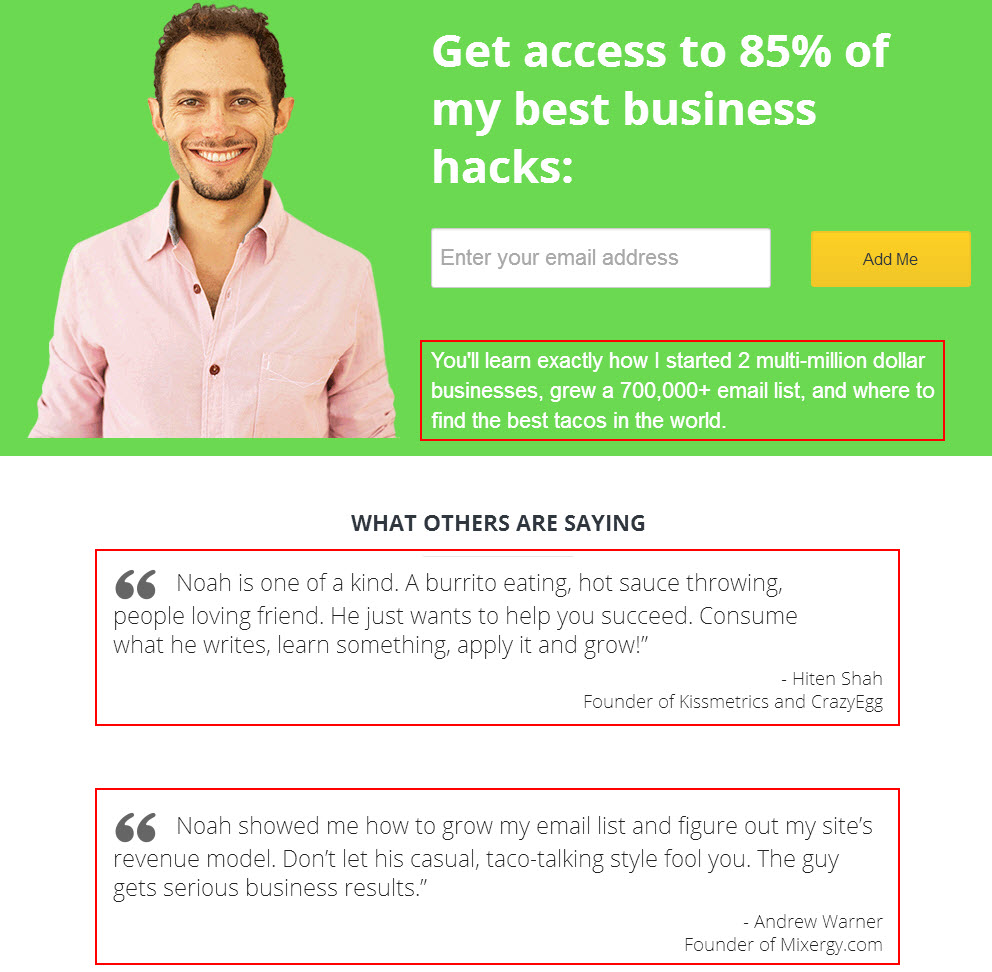


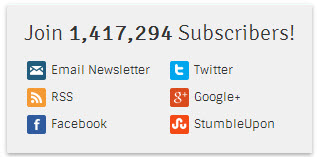


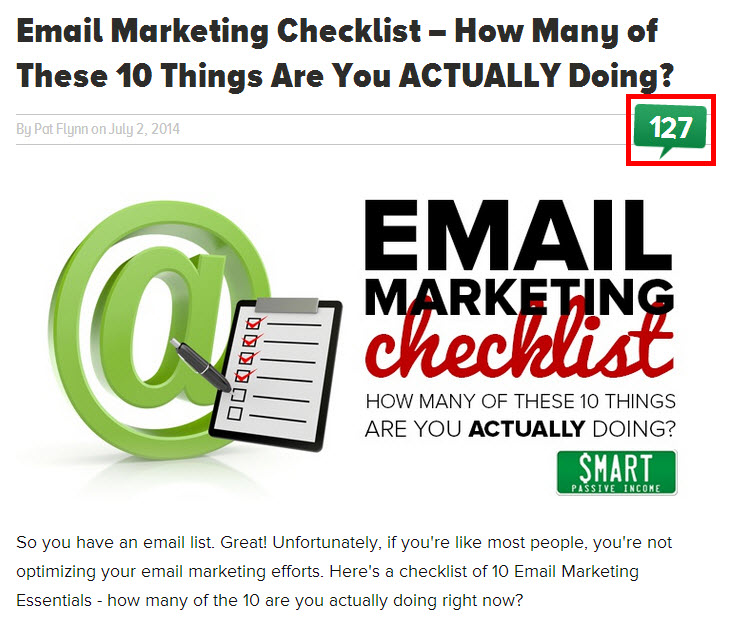
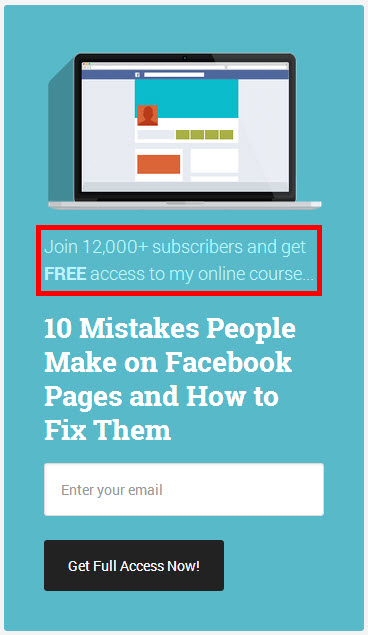
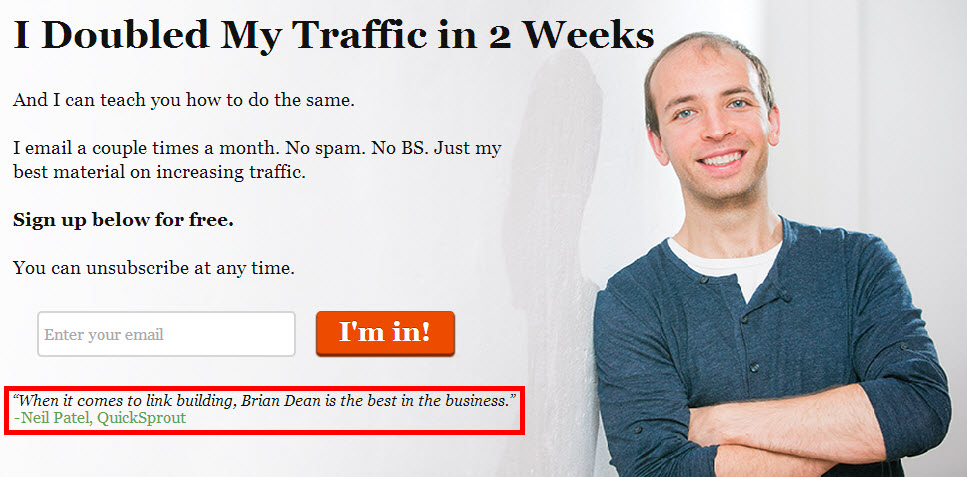


.jpg)
0 comments:
Post a Comment